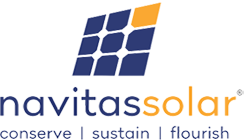Navitas Solar E Waste Management Rules
The Government of India has announced E-waste (management) rules 2022, which will come into force from 1 April next year and apply to every manufacturer, producer, refurbisher, dismantler and recycler of various types of e-waste.
We, at Navitas Solar, as a leading manufacturer and provider of solar systems in India, believe that this is long needed steps, that will help in reducing the impact of e-waste on our already precarious environment. We also believe that there is still room for effective market-based incentives to encourage voluntary adoption of e-waste recycling on the part of supply and demand side stakeholders.
The details of the E-Waste (Management) Rules-2022 are as follows:
E-Waste (Management) Rules- 2022
- Ministry of Environment, Forest And Climate Change(MoEFCC) has notified E-Waste (Management) Rules, 2022. These rules may be called the E-Waste (Management) Rules, 2022 and they shall come into force from 1 April, 2023.
- ‘e-waste’ means electrical and electronic equipment, including solar photo-voltaic modules or panels or cells, whole or in part discarded as waste, as well as rejected from manufacturing, refurbishment and repair processes.
- Procedure for storage of e-waste. – Every manufacturer, producer, refurbisher and recycler may store the e-waste for a period not exceeding one hundred and eighty days and shall maintain a record of sale, transfer and storage of e-wastes and make these records available for inspection and the storage of the e-waste shall be done as per the applicable rules or guidelines for the time being in force:
- Management of solar photo-voltaic modules or panels or cells:
- These rules shall be applicable to solar photo-voltaic modules or panels or cells.
- Every manufacturer and producer of solar photo-voltaic modules or panels or cells shall-
i) Ensure registration on the portal.
ii) Store solar photo-voltaic modules or panels or cells waste generated up to the year 2034-2035 as per the guidelines laid down by the Central Pollution Control Board in this regard.
iii) File annual returns on the portal on or before the end of the year to which the return relates up to year 2034-2035.
iv) Ensure that the processing of the waste other than solar photo-voltaic modules or panels or cells shall be done as per the applicable rules or guidelines for the time being in force.
v) Ensure that the inventory of solar photo-voltaic modules or panels or cells shall be put in place distinctly on portal.
vi) Comply with standard operating procedure and guidelines laid down by the Central Pollution Control Board in this regard.
vii) Recycler of solar photo-voltaic modules or panels or cells shall be mandated for recovery of material as laid down by the Central Pollution Control Board in this regard.
Reduction in the use of hazardous substances in the manufacture of electrical and electronic equipment and their components or consumables or parts or spares.
i) Every producer of electrical and electronic equipment and their components or consumables or parts or spares shall ensure that, new electrical and electronic equipment and their components or consumables or parts or spares do not contain Lead, Mercury, Cadmium, Hexavalent Chromium, polybrominated biphenyls and polybrominated diphenyl ethers beyond a maximum concentration value of 0.1 per cent by weight in homogenous materials for lead, mercury, hexavalent chromium, polybrominated biphenyls and polybrominated diphenyl ethers and of 0.01 per cent by weight in homogenous materials for cadmium.
ii) Components or consumables or parts or spares required for the electrical and electronic equipment placed in the market prior to the 1st May, 2014 may be exempted from the provisions of sub-rule (1) provided reduction of hazardous substances compliant parts and spares are not available.
iii) Every producer shall provide the detailed information on the constituents of the equipment and their components or consumables or parts or spares along with a declaration of conformance to the reduction of hazardous substances provisions in the product user documentation.
iv) Manufacturer shall use the technology or methods to make the end product recyclable.
v) Manufacturer shall ensure that component or part made by different manufacturer are compatible with each other to reduce the quantity of e-waste.
vi) The Central Pollution Control Board shall conduct random sampling of electrical and electronic equipment placed on the market to monitor and verify the compliance of reduction of hazardous substances provisions and the cost for sample and testing shall be borne by the producer and the random sampling shall be as per the guidelines laid down by the Central Pollution Control Board in this regard.
| Categories of electrical and electronic equipment | Electrical and electronic equipment code |
| Solar panels/cells, solar Photovoltaic panels/cells/modules | CEEW14 |
Applications, which are exempted from the requirements of sub-rule (1) of rule 16
- Lead as an alloying element in aluminium containing up to 0.4% lead by weight.
- Copper alloy containing up to 4% lead by weight.
- Lead in solders to complete a viable electrical connection between semiconductor die and carrier within integrated circuit flip chip packages.


 Online | Privacy policy
Online | Privacy policy
Related Posts
You May Also Like
Bonito Series: Driving Innovation in…
Read MoreTOPCon Series: The Next Generation…
Read MoreValuable Points to Remember During…
Read MoreNavitas Planet Partners with Hysolwin…
Read MoreDriving Towards a Sustainable Future:…
Read MoreWhy Do Top-Grade EVA Sheets…
Read MoreBonito Series: Driving Innovation in…
Read MoreTOPCon Series: The Next Generation…
Read MoreValuable Points to Remember During…
Read MoreNavitas Planet Partners with Hysolwin…
Read MoreDriving Towards a Sustainable Future:…
Read MoreWhy Do Top-Grade EVA Sheets…
Read MoreBonito Series: Driving Innovation in…
Read MoreTOPCon Series: The Next Generation…
Read MoreValuable Points to Remember During…
Read MoreNavitas Planet Partners with Hysolwin…
Read More